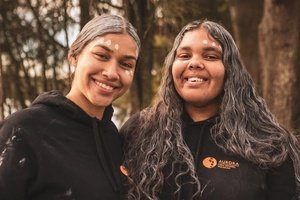Margot leads Climateworks’ cities team who aim to accelerate the transition to net zero across cities and the urban environment through the decarbonisation of buildings, transport, and infrastructure.
Prior to joining Climateworks, Margot worked for WWF France as head of advocacy and campaigns for sustainable cities.
In a nutshell, Margot has been working in the field of environment and urban policies from ten years and is passionate about nature.
Margot arrived over two years ago in Melbourne and is already tackling the big environmental issues.
"Quel est votre rôle dans cette compagnie?" asked my students.
“I am working in a team of 12 people to research and analyse, to gather data and statistics on public housing and public transport in order to advise Victorian and federal government about public housing and public transport,” Margot explained.
Though our conversation, my students began to understand that the ‘political time’ - that between elections and the time it takes for decisions on climate action to be put into place - can take months or even years.
My students realised this was simply too long on the environment’s terms.
Students were curious to compare the situation in France to that in Australia, and they discovered that France is ahead in terms of its environmental approach.
"The reason is that all the decisions are taken by the European community in Brussels and France is part of it,” Margot said.
“It’s not the case for Australia. Australia has also more space and more resources than France, so ecology was not a top priority.”
Fortunately, things are starting to improve after the terrible 2019 bushfires. It worked as a trigger for to start reflecting on the threats to our natural habitat, endangered species and climate change etc, Margot suggests.
"Mais pourquoi avoir choisi de travailler dans le secteur de l’environnement?" asked one of my students.
"I was born in Nice, on the French Riviera, a city between the sea and the mountain. I have always been linked to nature and started to think about working in public policy when I was in high school.
‘I have chosen this path because I wanted to change the system," Margot said.
There are different ways to get involved in caring for the environment - some people prefer hands-on measures such as recycling, cleaning beaches or working with associations like Sea Shepherd, Greenpeace or Surfrider.
“In fact, everyone can do something at [their] own level,” Margot reminded us.
But my students wanted to know more about the link between Margot’s work and some concrete actions she’s led.
So, Margot took the example of ‘la rénovation énergétique des bâtiments’.
“In Australia, houses can be quite cold, and insulation is a weak part,” she began.
“Consequently, damp and mould develop, and people can have health problems such as asthma. Also, people will use more heating, which leads to bigger electricity bills and greenhouse gas emissions. This vicious cycle contributes to climate warming.
“Finally, many residents can’t afford to pay the bills, so it impacts badly on the community.
“People in my team have all different skills which allow them to make propositions to the government to [improve buildings].”
My students started to see how Margot’s work and the gathering of data could help to improve the quality of our life and also have a positive impact on the environment.
Influencing government policy takes time, and we know we need to achieve net zero by 2050.
To reach this goal, we need to invest in sustainability - ‘le développement durable’, opt to recycle more and change our habits by consuming less.
But Margot ended our session on a positive note: in terms of renewable energies, Australia is a bit behind on a global scale but there are reasons to be optimistic.
"How can we do more?" asked my students.
The expert was quick to respond.
"Maybe asking ourselves every time we want to buy something new: do I really need this? Est-ce que j’en ai vraiment besoin?"















